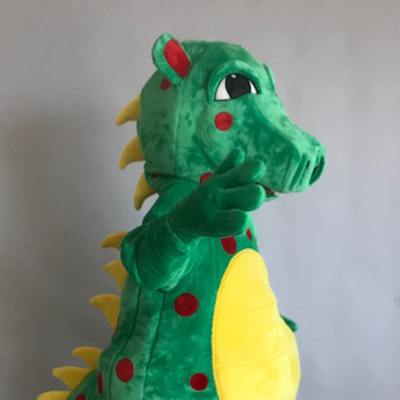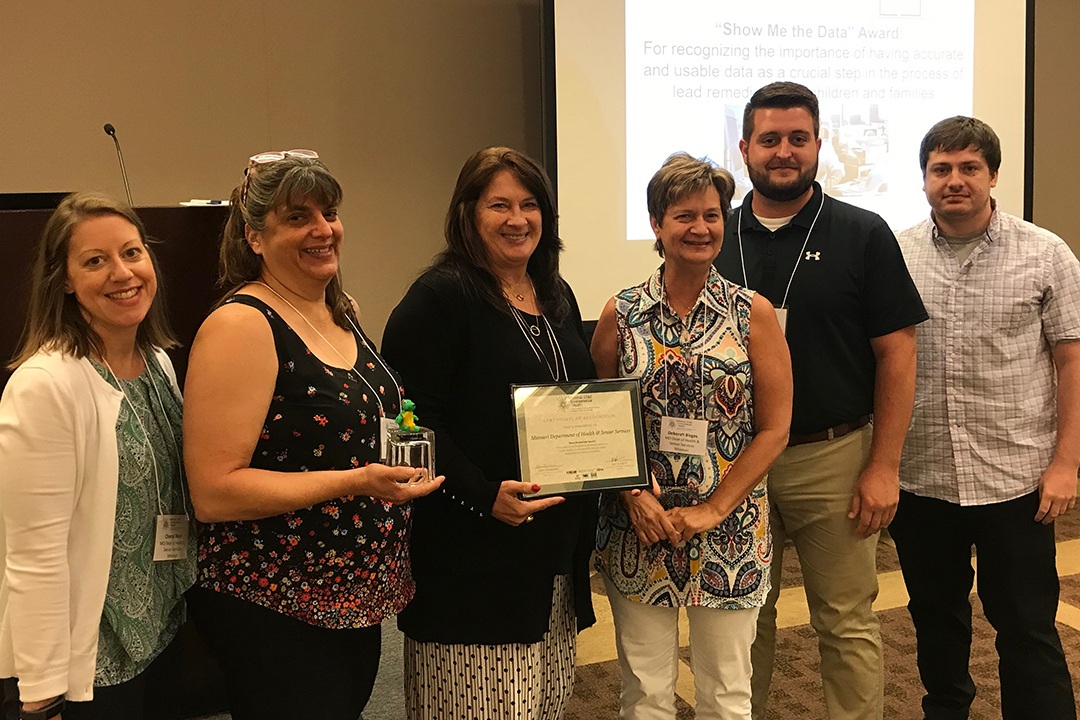
Aim
- Develop community-focused campaigns to provide lead education and to promote blood lead level (BLL) testing by health care providers in targeted areas of need.
- Decrease, by 10%, BLLs in children ages 0 to <72 months by August 2020.
- Increase, by 25% or more, the number of children ages 0 to <72 months that receive a screening test for BLLs by August 2020.
- Increase, by 25% or more, the number of providers who are following the Centers for Disease Control and Prevention (CDC) recommendations for follow-up of children ages 0 to <72 months with confirmed elevated BLLs by August 2020.

Results
Data Resources
- Developed a SAS code to help decipher confirmatory test data and worked with the information technology (IT) department to gain the ability to systematically download lead testing results from laboratories.
Guidelines and Recommendations
- Developed a provider report card to assess compliance with BLL testing of Medicaid-enrolled children.
- Developed a strategy to ensure that cases are referred to Pediatric Environmental Health Specialty Units when providers are not in compliance with proper measures when a child has elevated BLLs.
- Drafted revised regulations for administrative review:
- An updated CDC reference level of 5 (micrograms per deciliter) mcg/dL
- Use of screening questionnaires at all well-child checks
- Newly defined high and general risk areas
- Continued mandated testing of all 1-year-old and 2-year-old Medicaid-enrolled children
- Required lead risk assessments in residences of children with a venous BLL that is 10 mcg/dL or higher.
Education, Training, and Outreach
- Developed community-focused campaigns to provide lead education and to promote BLL testing by health care providers in four targeted areas of need (using zip codes/counties).
- As a result, one county increased their testing rates by 200 percent over a six-month period.
- The Childhood Lead Poisoning Prevention Program (CLPPP) has since increased the number of counties targeted for outreach from four to seven.
- Partnered with Missouri Family Partnership’s Northeast Region family partner to increase outreach, family engagement, and provide trainings.
- Partnered with MHN (Medicaid) on data-sharing to assess testing rates.
- Developed/printed and distributed a variety of outreach materials:
- Renovate Right booklets for hardware stores
- CDC books and guidelines for testing BLLs for daycare centers, Head Start facilities, and physician clinics
- Lead fact sheets and tips for families for local public health agencies, home shows, and health fairs
- Child care program administrators at the Department of Health and Senior Services have requested updates to the online training for child care facility staff across the state; training is available for continuing education hours and staff are required to receive training annually.
- Public health nurses and lead risk assessors conducted trainings at various provider offices, including local public health agencies, to MHN case managers and other staff to educate providers on:
- Testing guidelines
- Signs and symptoms of lead exposure
- Treatment protocols
- Community resources
- Navigating school accommodations
- Local reimbursement
- One MHN health plan requested a child lead poisoning lunch-and-learn during October 2020 to highlight the lead poisoning prevention activities for health care providers and lead case managers.
- Presented lead prevention and testing information and provided outreach materials at the Code Enforcement annual conference.
- Presented on lead screening at Epi Grand Rounds presentations, local public health agency conferences, nursing conferences, physician conferences, and the Missouri Department of Elementary & Secondary Education’s Conference on the Young Years.
- Also presented on lead screening for Special Supplemental Nutrition Program for Women, Infants, and Children (WIC), Parents As Teachers (PAT) presentation, and MHN-managed care expansion statewide.
- The Missouri team also has been asked to present in subsequent years at the Conference on the Young Years.
- PAT is asking for presentations at each regional meeting date via WebEx, potentially reaching 1,700 PAT or PAT-associated staff.
- Many of the efforts to conduct the Maternal and Child Environmental Health Collaborative Improvement and Innovation Network (MCEH CoIIN) work laid the groundwork for future opportunities to partner with Department of Elementary & Secondary Education, and especially with PAT and First Steps, MHN, and the child care staff at the Department of Health and Senior Services. The education and information that has been part of the MCEH CoIIN efforts resulted in several new invitations for CLPPP staff to present information to large statewide audiences that are in contact with young children and families.
- Participated in multiple meetings related to Title V programming (Early Childhood, Home Visiting, MCH Services).

Resources
- SAS Code to decipher confirmatory test data
- Kids Run Better UN-leaded bib
- Recommended Actions Based on BLL
- Missouri Healthy Children and Youth Lead Risk Questionnaire (draft)
- County Risk-Level Data 2018
- Lead Exposure Risk Factors using 2018 county data
- Preventing Lead Poisoning Tips for Families (brochure)
- Reprinted the following CDC publications:
- Missouri Department of Health and Senior Services: Reaching Underserved Communities (National Environmental Health Association MCEH CoIIN Success Story)
Click here to view the full change package of strategies and actions that Missouri used as they worked to achieve their aims as part of the MCEH CoIIN.
Quotes from the Missouri MCEH CoIIN Team
On quality improvement (QI):
QI “caused us to strive to improve in all aspects of the program. QI is both an achievable and challenging goal and a reality check for the program staff. In a very positive way, it is continuously striving to improve. It can also be a format for a sort of passive competition or peer pressure among providers and staff in various regions. It is measurable and documented proof of the current evaluation of an activity or program.”
On the importance of collaboration:
Collaboration “decreases [the] learning curve and time needed for self-education/review of literature for CLPPP and Healthy Homes programs across the U.S. [It] enhances [our] ability to be more creative and to provide updated or fresh ideas, illustrations, and access to program materials so they can be tailored to our state. [It fosters] new ways to reach out to provide education, keeps audience more engaged, [and] able to hear about a topic from different angles and different professionals in the community. It increases the validity of the message when it is presented by various groups that can spread/preach the same message [and] target aspects that are pertinent to children and families at different times and focus issues (e.g., education, discipline, healthy homes, medical care, child care, environmental, and occupational issues that impact young families, housing concerns for young families, etc.).”
On the value of working with families and community agencies:
“No one person or program can do it all for everyone and every concern. Knowledge is power! Every family and child is unique, as is their health status, home, and environment. Every community is unique. Every family and community has challenges and strengths. Giving examples and telling stories makes the lead poisoning concern more understandable and gives a stronger takeaway message.”
On their biggest takeaway from the MCEH CoIIN:
“There was a lot of work, talk, research, data analysis, and brainstorming among and within the participating states. CoIIN experts offered resources that helped us move past the barriers and challenges we face in trying to further develop our CLPPPs. We received encouragement and alternative strategies to try. The CoIIN pushed us to accomplish more than we might have on our own. How and why changes can and should occur and ways to be more successful were brought to our attention and to the attention of our departments and other state partners.”

Contact

Contact the Missouri Team:
https://health.mo.gov/living/environment/lead/
Sharon Odom, Sharon.Odom@health.mo.gov, 573-522-8596


